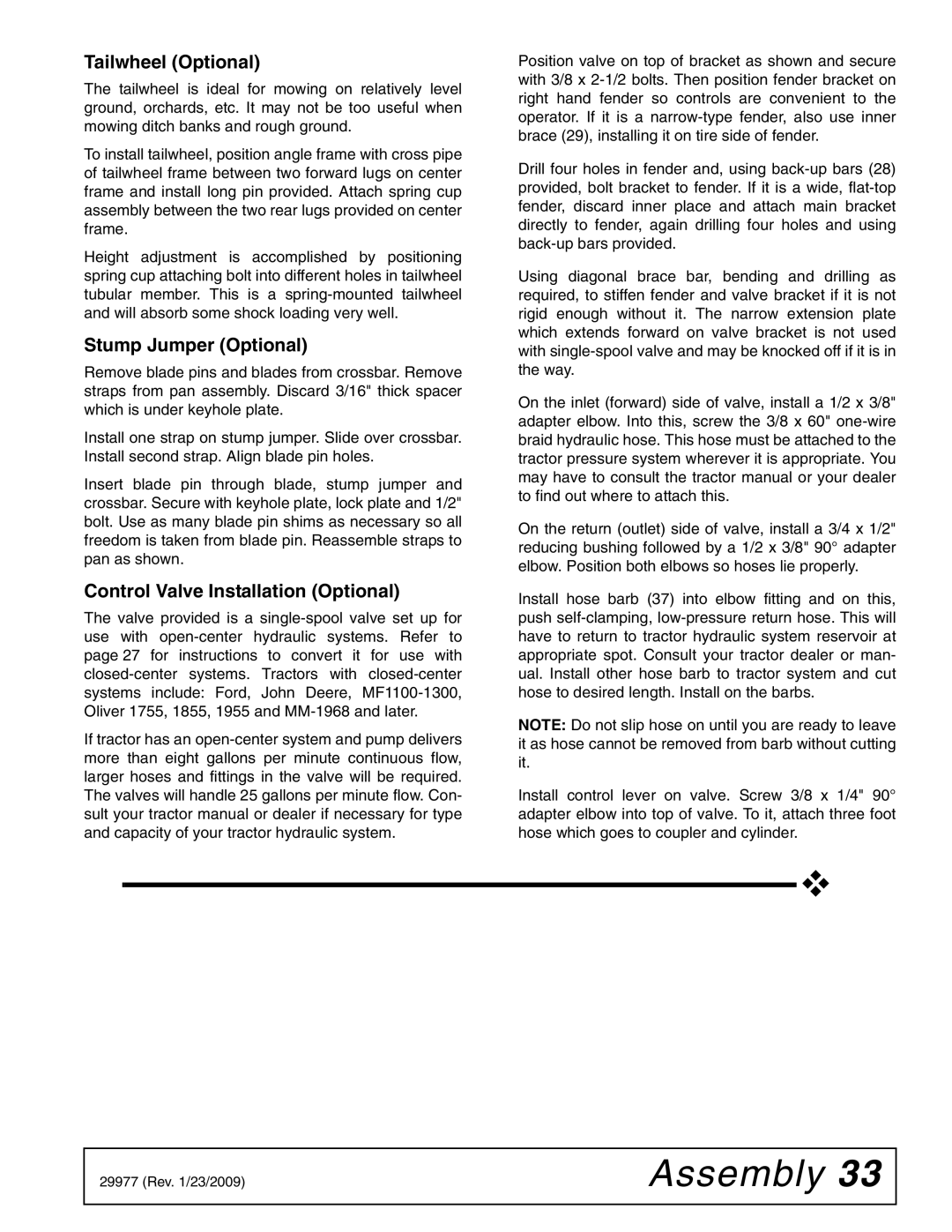Tailwheel (Optional)
The tailwheel is ideal for mowing on relatively level ground, orchards, etc. It may not be too useful when mowing ditch banks and rough ground.
To install tailwheel, position angle frame with cross pipe of tailwheel frame between two forward lugs on center frame and install long pin provided. Attach spring cup assembly between the two rear lugs provided on center frame.
Height adjustment is accomplished by positioning spring cup attaching bolt into different holes in tailwheel tubular member. This is a
Stump Jumper (Optional)
Remove blade pins and blades from crossbar. Remove straps from pan assembly. Discard 3/16" thick spacer which is under keyhole plate.
Install one strap on stump jumper. Slide over crossbar. Install second strap. Align blade pin holes.
Insert blade pin through blade, stump jumper and crossbar. Secure with keyhole plate, lock plate and 1/2" bolt. Use as many blade pin shims as necessary so all freedom is taken from blade pin. Reassemble straps to pan as shown.
Control Valve Installation (Optional)
The valve provided is a
If tractor has an
Position valve on top of bracket as shown and secure with 3/8 x
Drill four holes in fender and, using
Using diagonal brace bar, bending and drilling as required, to stiffen fender and valve bracket if it is not rigid enough without it. The narrow extension plate which extends forward on valve bracket is not used with
On the inlet (forward) side of valve, install a 1/2 x 3/8" adapter elbow. Into this, screw the 3/8 x 60"
On the return (outlet) side of valve, install a 3/4 x 1/2" reducing bushing followed by a 1/2 x 3/8" 90° adapter elbow. Position both elbows so hoses lie properly.
Install hose barb (37) into elbow fitting and on this, push
NOTE: Do not slip hose on until you are ready to leave it as hose cannot be removed from barb without cutting it.
Install control lever on valve. Screw 3/8 x 1/4" 90° adapter elbow into top of valve. To it, attach three foot hose which goes to coupler and cylinder.
29977 (Rev. 1/23/2009) | Assembly 33 |
|
|
